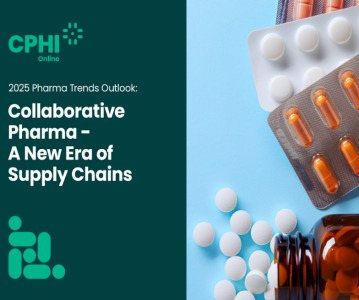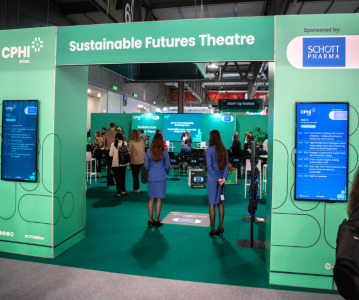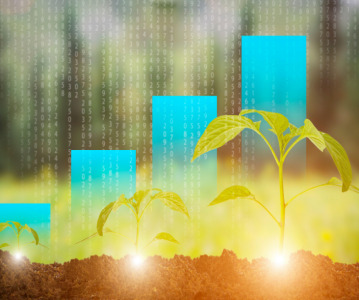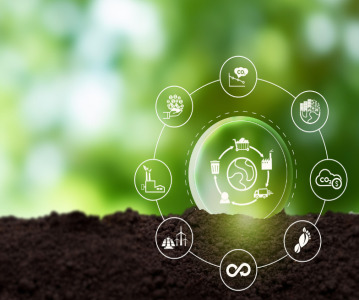The future of robotics in pharma: drug discovery to manufacturing

Robotics are starting to play a key role in the discovery and manufacturing of health and drug products, with numerous benefits, from cost reduction to increased sustainability, but there are challenges as well.
In this article we delve into some of the aspects of pharmaceutical discovery and manufacturing involving robotics and technological advances, with insights from experts Bill Whitford of Arcadis DPS Group and Boy Tjoa, Managing Director of Tjoapack.
Robotics in healthcare has been a feature, albeit in early stages since the 1970s, but this apparent progress in the health industry did not really translate into pharmaceuticals for a long time. In other industries robotics were beginning to be used in manufacturing to streamline processes, cut down on lead times and employ uniformity across products. Yet still such technology wasn’t being readily used in the pharmaceutical supply chain.
Then, in the COVID-19 pandemic, with workforces decimated due to illness and quarantine regulations, the need for robotics suddenly became essential. This was reflected in the demand for robots from life sciences companies in North America increasing by 69% from 2019 to 2020. Robotics are mostly used in the pharmaceutical industry in manufacturing aspects of dispensing, sorting, assembly, and in packaging. However, there is scope for the use of this technology, including artificial intelligence (AI) and machine learning (ML), all the way from drug discovery through to these later manufacturing and packaging stages.
Drug discovery
The advantages for using robotics for complex, repetitive tasks are extensive, removing the inevitability of human error as well as increasing efficiency by carrying out such processes much more quickly and even running simultaneous experiments. Drug discovery is often held back by high costs, lengthy timelines, and high failure rates, AI and robotics are ideally suited to improving all of these aspects.
Bill Whitford, gives an example of this rapidly improving technology in assays: “Automation has significantly transformed the field of drug discovery and development. The number of assays has dramatically increased and the required sample size for many assays has reduced. The ability to accession, store and process assay data has dramatically increased, and the cost of probes and monitoring devises has declined. The means of understanding and extracting value from increased data sets has dramatically increased through AI/ML applications. Finally, automation and robotic technologies are improving dramatically. This all has increased the value of automated and robotic sample processing. Examples of automated assays in drug development include high-throughput screenings (HTS) where automated systems handle the preparation of assay plates, compound addition, and data collection.”
Linking technologies, such as using robotics with the cloud also increases efficiency as technicians can see and analyse resulting data in real time. Adding high quality data to databases concurrently adds to the trove of information AI feeds off of, increasing its aptitude to analyse hypotheses as needed, leading to an increased likelihood of discovering new drugs.
Boy Tjoa, Managing Director at Tjoapack states: “Having more data to work with and enhancing the quality of the experiments provides the ability to make more precise hypotheses which in the end, brings humanity one step closer to discovering new drugs that will help beat the most severe illnesses.”
Further advantages of this extend to lowering costs for pharmaceutical companies in the production stages by increasing efficiency, reducing waste, and lowering overhead costs from labour among others.
Whitford adds: “Automated assays are not only faster, more efficient, and cost-effective − but demonstrate improved accuracy and reproducibility. Concerns include the replacement of employees, causing a reduction in available jobs, but while humans have the weakness of losing focus and making a mistake, automates systems have the weakness of misaligning and making thousands of mistakes.”
As Whitford points out, although the margin for error is small with this kind of tech, the implications of any could be more significant, but as AI is used more regularly in this way, that risk level will only continue to decrease.
Personalised, precision medicine
Implementing robotics into drug production has benefits extending to personalised medicine, whereby drugs can be tailored specifically and produced on-demand.
Tjoa remarks: “Robotics represents a significant advancement in streamlining the manufacturing process of personalised medicines.”
Partnerships with companies providing solutions in automation and robotics are becoming more common. This further extends to precision medicine, where robotics can make the production of advanced dosage form drugs much more straightforward, for example in the creation of multi-compartment capsules using powder, granule, beads, or other formulations. Automation of these production lines means that these precisions drugs can be made in parallel and at scale, massively increasing efficiency, reducing overall costs, and enabling the medicine supply to be able to meet demand more effectively.
One lab, Multiply Labs, has developed a Consortium with Cytiva, Thermo Fisher, Charles River Laboratories, and UCSF to use robotic systems for cell therapy manufacturing. The technology is adaptable so that any required process can be implemented via the programming of modules, it’s compatible with GMP instruments, it helps to reduce production bottlenecks, and importantly, reduces human contamination, something that carries a significant risk for patients in cell therapy.
Whitford states how these advantages can lead to an overall more secure supply chain, which ultimately benefits patients.
“Many manufacturing process are becoming more automated for the reasons described above. Advances in robotic engineering and digital process sensing are the greatest drivers here. Automation of manufacturing can bring down costs, making a product more profitable. Automation can also make a manufacturing process more transportable and cloneable, and less dependent upon a skilled workforce and therefore supporting increased distribution of manufacturing sites.”
Of course, with the implementation of any new technology, there are teething problems. Particularly with AI and machine learning, there is a lot of testing and data collection that needs to happen in the first place, to enable the technology to reach its full potential.
Tjoa outlines some of these issues: “It requires massive investments; the integration of robotics and AI in therapy development is a nascent endeavour, entailing significant risks of errors and malfunctions. Extensive testing is imperative, given the criticality of human health, and demands a profound sense of responsibility; energy consumption levels will rise with the increasing number of robotics; the reliance on a consistent internet connection can give rise to disruptions in productivity and potential data loss, among other consequences.”
Compliance and regulation
Robotics can mean it is easier to keep up with changing regulations and meeting exacting standards. By integrating automated processes, adherence to standardised procedures becomes much more viable. This can also help with reporting on these processes as well as adding data collection simultaneously, which in turn helps to improve visibility of the business and overall health of the production chain.
This automation is also useful in packaging stages, with a more streamlined process to mitigate any errors and ensure uniformity when it comes to producing blister packets, cartons, and vial filling. This again aids with compliance and safety measures, which is especially apparent in vial filling as without robots this process can only be carried out by highly trained technicians under ISO-certified clean room conditions in order to meet regulatory requirements. The use of robots make clean room experiments more accessible, reliable, and safe for when handling more hazardous materials.
The use of robotics can increase compliance within in the supply chain by fully integrating serialisation into manufacturing operations, ensuring regulations are met and establish better traceability of products.
Sustainability and pharma 4.0
Pharma 4.0 has triggered a shift in processes becoming more innovative and more technologically advanced over the last few years, with the added benefit of increasing sustainability in these aspects. Not just by chance, many pharmaceutical companies have actively invested in pharma 4.0 technologies to bring about greater changes internally to increase their environmental sustainability. Robotics incorporation has a direct impact on energy consumption, waste reduction and water reduction, as well as having wider felt effects by reducing scope 2 and 3 emissions throughout the supply chain.
Whitford characterises some of these advantages: “Sustainability is increased by automation by a reduction in production errors (robots don’t get bored or distracted), reduction in contamination (humans are very dirty) intensification of the process in terms of producing more product per time or footprint (robots are faster and tireless), reduction of the cost of clean-suite classification, and a reduction in personnel maintenance (such as break rooms and toilets) as well as even the environmental burden of personnel (commuting by car produces greenhouse gasses).”
Conclusion
Robotics is one of the most progressive parts of pharmaceutical manufacturing at the minute, with companies just starting to realise the potential it could have on aspects of their business, the patients they are serving, and the environment. The next few years will see many challenges surrounding this area but the rewards are promising to be endless.
Sources:
1. Cyber-Weld. Robotics in the Pharmaceutical Industry [Date Accessed 22/09/2023]
https://www.cyberweld.co.uk/robotics-in-the-pharmaceutical-industry
2. Pharm Tech. Using Robotics In Pharmaceutical Manufacturing [Date Accessed 22/09/2023]
https://www.pharmtech.com/view/using-robotics-pharmaceutical-manufacturing
3. Parenteral Drug Association. Robotics and Automation in Pharmaceutical Production [22/09/2023]
https://www.pda.org/pda-letter-portal/home/full-article/robotics-and-automation-in-pharmaceutical-production
4. Yearimani S, Bhilegaonkar S, Gawade H, Desai Y and Sheikh M. Robotics to Grow Sharply in Pharmaceutical Industry. Adv. Robot. Autom. 11:6 (2022).
5. Pharmaceutical Technology. Use of robotics in pharmaceutical manufacturing to peak in 3 to 5 years [Date Accessed 21/09/2023]
https://www.pharmaceutical-technology.com/news/the-use-of-robotics-in-pharmaceutical-manufacturing-to-peak-in-three-to-five-years-poll/
6. Pharmaceutical Technology. Cloud robotics labs are accelerating drug discovery and development. [Date Accessed 22/09/2023]
https://www.pharmaceutical-technology.com/comment/cloud-robotics-labs-drug-discovery-development/?cf-view
7. Multiply Labs. Robots for Cell Therapy Manufacturing. [Date Accessed 27/09/2023]
https://multiplylabs.com/products/cell-therapy/
Related News
-
News How GLP-1 agonists are reshaping drug delivery innovations
GLP-1 agonist drug products like Ozempic, Wegovy, and Mounjaro have taken the healthcare industry by storm in recent years. Originally conceived as treatment for Type 2 diabetes, the weight-loss effects of these products have taken on unprecedented int... -
News NextPharma Achieves Carbon Neutrality for Scope 1 and 2 Emissions
NextPharma has confirmed that it will achieve carbon neutrality for its Scope 1 and Scope 2 emissions starting January 1, 2025, marking a significant milestone in its sustainability journey. -
News 2025 Pharma Trends Outlook: Collaborative Pharma – A New Era of Supply Chains
A new year, a new Pharma Trends Outlook report! The 2025 Pharma Trends Outlook report examines key changes expected in the pharmaceutical industry for the coming year, particularly in regards to the supply chain. -
News Closing 2024 with Editors' picks of top articles from the past year
Coming to the end of 2024 and it’s certainly been a busy year, for CPHI and for the rest of the pharmaceutical and healthcare industry. Topics of conversation throughout the last 12 months have been varied, touching on the technical, to the polit... -
News SCHOTT Pharma’s sustainable journey with CPHI
Sustainability is of paramount importance in the pharmaceutical industry. See how a recent partnership between CPHI and SCHOTT Pharma has helped to highlight and accelerate their sustainability journey to reach global goals. -
News Day in the Life of a Green Chief Financial Officer
Our latest look into the daily lives of the people behind the pharma community brings us to meet Juan Jose Piedra Galan, Global Financial Planning & Analysis Manager for Galderma, otherwise known as 'The Green CFO'. -
News CPHI Milan 2024 - From the Floor
Milan and CPHI welcome you to 2024 CPHI Milan! As we celebrate the 35th edition of our flagship CPHI show, editors Vivian Xie and Lucy Chard bring you the latest from the show floor, conference sessions, and innovative solutions from all exhibitors, at... -
News CPHI Podcast Series: analysing supplier audits with the PSCI
This episode of the CPHI Podcast Series, hosted by Digital Editor Lucy Chard, goes through the results from the recent audits from the PSCI conducted on suppliers across the pharmaceutical industry, looking into ESG outcomes.
Recently Visited
Position your company at the heart of the global Pharma industry with a CPHI Online membership
-
Your products and solutions visible to thousands of visitors within the largest Pharma marketplace
-
Generate high-quality, engaged leads for your business, all year round
-
Promote your business as the industry’s thought-leader by hosting your reports, brochures and videos within your profile
-
Your company’s profile boosted at all participating CPHI events
-
An easy-to-use platform with a detailed dashboard showing your leads and performance







